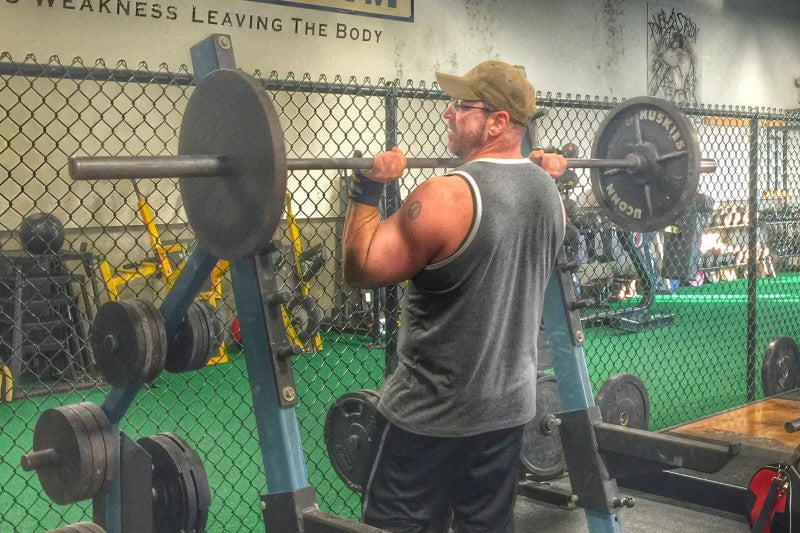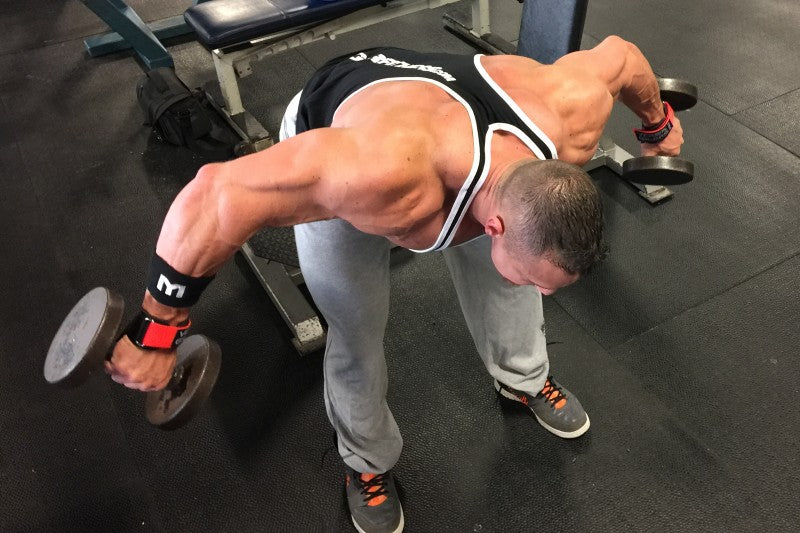
Get Bigger, Faster - 3 Steps to Better Shoulder Workouts
- Smith machine seated overhead presses - Performed with light weight, of course. This is a horrible way to start a shoulder training workout, not to mention the Smith machine inherently sucks. In fact, my testosterone levels just dropped thinking about this weak-sauce (almost completely useless) contraption.
- Side lateral raises - Typically using either a weight that wouldn't challenge a 90 year old nun, or a something far too heavy. Half-swinging a 70 pound dumbbell probably works your core more than your shoulders, bro.
- Front dumbbell raise - Ah, yes...the front raise. As if your front delts need any more work after completely 42 sets of bench press this week. I've yet to see a seasoned lifter with small front delts. Heavy bench and overhead presses are really all you need to build monster anterior deltoids. Direct front shoulder work is simply not needed, and in fact, likely contributing to a shoulder girdle imbalance.
This type of globo gym, limp wrist gains training isn't going to cut it. If you're after shoulder beef and brawn, it's time to start training smart AND hard. Here are 3 steps that can help you turn your tiny delts into thick, strong cannonballs.

I?ve been using this type of structure for over 20 years. it's not magic, but it works damn well.
Step #1 - Start With a Strength-Focused Barbell or Dumbbell Exercise
This is an obvious tip, but an important one. Trainees don't hesitate to jump on the bench press and pound out heavy, low rep sets. When it comes to shoulder training though, the effectiveness of this approach is quickly forgotten.I suggest leading off with 2-3 heavy sets in the 4 to 8 rep range. Exercise choice doesn't really matter, as long as it's a barbell or dumbbell variation. If you choose to start your workout with a barbell exercise, follow it up with dumbbell volume (see below)...and vice versa.
Quality variations include:
- Military press or push press
- Seated barbell shoulder press or seated behind the neck press
- Arnold press, seated or standing
- Standing one arm dumbbell press
- Seated or standing two arm dumbbell press
Now push each set for as many reps as possible, stopping when you either:
- Feel like you might fail on the next rep.
- Feel like your exercise form is starting to slip.
Step #2 - Next Up, Crush Your Delts With Volume
Now that the intensity work is done, it's time for volume. Put your shoulders to the test. They do not need to be babied.Volume work is excellent for building muscle. And if strength is your goal, this combination of improved muscularity and shoulder conditioning will only help forge more powerful deltoids.
I suggest 4 to 5 sets of 10 reps, but you can utilize as few as 3 sets. Use the same weight for each set. When you are able to perform 10 total reps per set, add weight.
Remember the point made above: if you begin your workout with a barbell exercise variation, your volume work should feature a dumbbell. If you begin your session with a dumbbell exercise, perform volume work with a barbell variation.
Here are some combinations that I like:
- Military press (Heavy Work) + Seated dumbbell press (Volume Work)
- Standing one arm dumbbell press (Heavy Work) + Seated barbell press (Volume Work)
- Push press (Heavy Work) + Seated Arnold press (Volume Work)
Step #3 - Perform Vertical Grip Bent Over Laterals
Vertical what? Grip what?99.99% of the time trainees perform bent over laterals with their palms facing the ground. While this is effective, it's not optimal. Try this small tweak...
Get in the starting position for this exercise. Now, rotate your hands so that your palms are facing behind you rather than towards your legs. Perform each rep using this same hand position. At peak contraction, your hands should remain facing in this same direction - thumbs down, palms facing backwards.
Using this small adjustment you should be able to feel your rear delts working harder during each rep.

Rotate your hands so that your palms are facing behind you rather than towards your legs. Perform each rep using this same hand position.
Shoulder Workout for Big Gains
Now let's look at a complete workout. I've been using this type of structure for over 20 years. It's not magic, but it works damn well. Make adjustments as needed.
To learn more about my system of training, please check out my book Massive Iron available here at Tiger Fitness.
| get Bigger, Faster | |||||
|---|---|---|---|---|---|
| Shoulder Workout | |||||
| Exercise | Sets | Reps | |||
| Standing Overhead Press | 2 | 12 Rep Goal | |||
| Seated Dumbbell Press | 4 | 10 | |||
| Side Lateral Raise | 3 | 10 | |||
| Bent Over Laterals | 4 | 10 | |||
Questions about this article or workout, please leave them below.






